Does the fleet need small rocket ships?
How it all began
In 1965, the Soviet Navy finally formulated the requirements for a new class of ships, which were later assigned the classification of the IRAs (small rocket ship). It was originally planned that the new ship will have the dimension and displacement characteristic of rocket boats, but with better navigability. However, the constant customer requirements to change the design, especially in terms of placing on the ship the six heavy anti-ship missiles P-120 Malachite, led to a significant increase in displacement, which subsequently reached 670 tons, which ultimately required the introduction of a new class of ships.
Since 1967, the construction of the 1234 project ISCs has begun for the Soviet Navy. For its time, these were in many ways unique ships. With a displacement of the western corvette (and very light), they carried unprecedentedly powerful offensive missile weapons, good for their time, the Osa air defense missile system, AK-725 caliber 57 mm caliber.
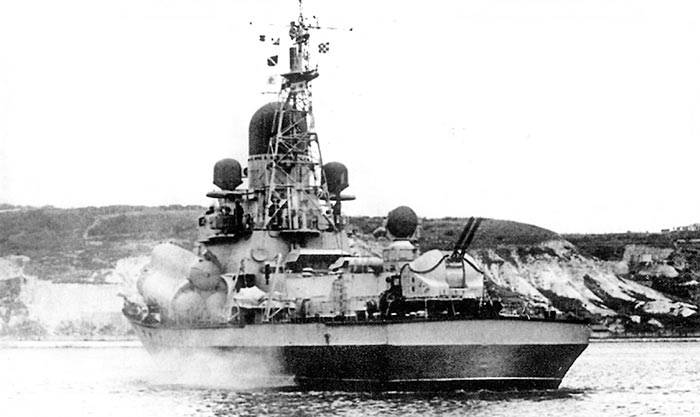
On the next series of ships, the composition weapons continuously strengthened, a modernized air defense system appeared, instead of the 57-mm artillery, a more powerful single-barreled 76-mm AK-176 appeared. Added 30-mm AK-630M for firing at air targets. The ships had EW facilities and developed radar and electronic equipment for such a small ship.
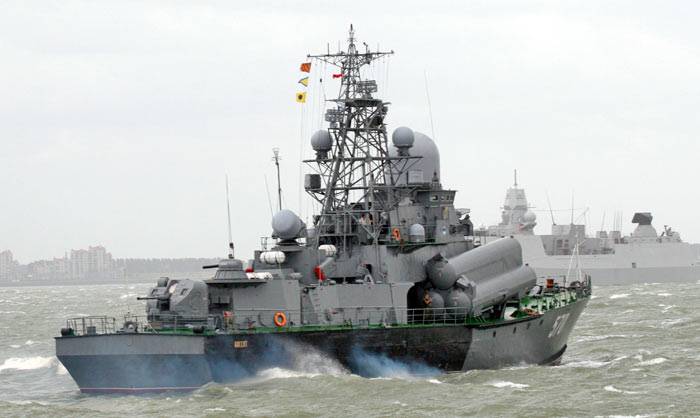
The second quality was the "cutter" maximum speed - 35 nodes. This ensured superiority in speed over most surface ships of those years, albeit short-lived.
For its time, it really was a powerful strike tool in the war at sea, and even now it has a high combat potential.
The small size (and visibility) and speed qualities of RTOs allowed them to "work" in the coastal zone, among the islands of various archipelagos, in the fjords of Norway and other similar places, and their only enemy in those years was the shock aviation, which, however, still had to get to them. During peacetime combat missions, RTOs were effectively used during the “weapon tracking”, hanging on the tail of western warships and ship groups. At the same time, the latter were deprived of the opportunity to break away from such tracking. Their high speed allowed them to participate in raiding operations similar to those carried out by the Indian Navy in 1971. In the event of the outbreak of hostilities, the only salvation from the Soviet RTOs would be carrier-based attack aircraft. Where they were not there, the prospects for US and NATO ships would become very vague. At the same time, RTOs were less vulnerable to the then submarines - the high speed of these ships in attack and the expectation of a target “on foot” somewhere under cover of the coast, in bays, fjords, behind cliffs or islets made them a difficult target for submarines of those years. The ships were, among other things, unpretentious to the conditions of basing, their presence could be deployed in any place where there was a pier and the ability to supply at least fuel from the shore for refueling.
The ships repeatedly went to combat service in the Mediterranean and in Vietnam, and, in general, the old epithet given to them (“the gun attached to the temple of imperialism”) was quite correct.
It was especially true in the case of a theoretical nuclear conflict. The western ships of those years could not repel the massive attack of the anti-ship missiles of the P-120 - the newest American cruisers and destroyers had a chance to do this, provided that the salvo was not very dense. In the remaining cases, a small IRA that used anti-ship missiles with a special warhead could inflict very significant losses on the enemy - up to tens of percent of the personnel and ships that were in certain naval forces. One.
Such a debut could not fail to impress, and the USSR continued, as it is called, “to invest” in RTOs. The 1234 series smoothly evolved along the path of weapon reinforcement and REV (from the 1234 project to 1234.1), the final of which was the Nakat MRC of the 1234.7 project, armed with twelve Onyx missiles, built, however, in a single copy.
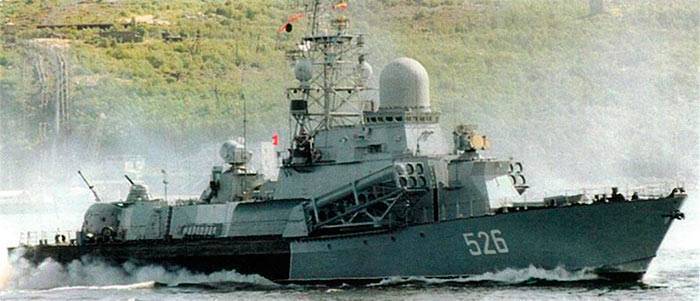
Much more sophisticated projects were also created: 1239 with aerostatic air discharge (a type of airbag, today there are two MRKs of this project, Bora and Samum, built on the Black Sea Fleet) and MRKs of the 1240 project on hydrofoils. These ships had a higher speed than the "classic" IRAs.
But time changed, and with it the approaches to the war at sea had to change. Already in the 80-ies the enemy has adapted.
Sunset of former opportunities
In the course of endless confrontations with the Soviet Navy, the US Navy worked out a tactic of evading tracking.
The Americans also gained a great deal of practical experience in the combat use of the ZSM “Standard” on surface targets at a short distance. This missile made it possible to deliver a truly instantaneous strike on the ship to the pursuer, the time from the moment of its launch to hitting the target did not leave the MRK to have time to counterattack. In theory, any missile defense system can do this, but from the theory, to the method and the rocket with the corrected “children's diseases” repeatedly worked out on the exercises, there is a great distance.
The Americans had extensive data on the performance characteristics and design of many Soviet missiles, and, as a result, effective jamming systems — they often proved to be a more reliable means of defense than the ship’s air defense system. Finally, in the second half of the eighties, there was a massive influx into service of the US Navy BIUS AEGIS, radar with AFAR, and universal Muk.41 guards, which made the defeat of the ship by launching several missiles on it impossible.
But most importantly, the ideology of naval combat itself has changed. The Iranian operation “Pearl”, the Falklands and the battle in Sirte Bay in 1986 showed that in the presence of a real threat, warships will not be “exposed” to attack. Deal with the enemy fleet there will be airplanes armed with anti-ship missiles and submarines.
In the Persian Gulf, the Iraqi “mosquito fleet” was destroyed not by Iranian corvettes, but by “Phantoms”. In the Falklands, not a single ship was sunk by another ship in battle - an atomic submarine working from the British side, with Argentine aviation. During the battle in Sirte Bay, the Libyan ISC was sunk by an air strike (the fact that domestic sources attributed this attack to the URO cruiser was a mistake, it was the deck Intruder). Partly, the clashes in the Persian Gulf on 1988 (Operation Mantis) are knocked out of this series, but even here the course of events is rather “minus” to the concept of a small URO ship - Americans have shown very well what their ships can do with weaker enemy ships on electronic weapons. It is unlikely that IRAs, if they had Iran, would have shown themselves better.
This, of course, does not mean that RTOs have become completely inapplicable. This means that they have lost their former importance in attacking surface ships - no one else was going to expose them to attack in conditions of even a threatened period.
Moreover, the threat level for the ROCs themselves also increased - now any patrol plane could attack them from a safe distance using anti-ship missiles, while submarines had high-speed remote-controlled torpedoes, which could be used to reach the fastest and most maneuverable surface target, except ships on hydrofoil. The appearance of sea-based cruise missiles of the “Tomahawk” type in the USA and “Granat” in the USSR made senseless the idea of a raid - now there is a technical opportunity to hit any naval base from a distance of more than a thousand kilometers.
By the end of the eighties, RTOs turned into a “niche” weapon, applicable in rare circumstances, mainly under the conditions of having a stupid doer who could be attacked by the enemy. They, of course, allowed the traditional tracking of weapons. But during the threatened period, the enemy would withdraw surface forces further into the sea. They allowed to quickly deploy a naval presence anywhere, but the enemy could send submarines there that the RTOs alone could not cope with. They could guard the troop units on the transition - but only from surface ships that a normal enemy would not send to intercept, could support the troops with fire - but badly, the 76-mm gun is not the best tool for this. Their speed meant little against attack aviation, and primitive electronic weapons did not allow them to act against modern large warships of a potential enemy. And so in everything.
According to the mind, in the eighties it was necessary to close the topic, clearly realizing that the main efforts in the BMZ should be aimed at anti-submarine defense, fighting mines and fire support of the landing, which required completely different ships, but as usual, everything turned out to be not so simple.
New IRAs - a child of accidents
Since 2010, the Zelenodolsk Shipbuilding Plant has begun construction of the Buyan-M 21361 series of MRCs. Although these ships were assigned to the same class as the “Gadflies” and “Sivuchi”, in fact they were the product of a completely different concept. In these ships, the Navy "crossed the horror and the hedgehog" - piled it into a non-launching small artillery ship also under the UBCA under eight Caliber cruise missiles.
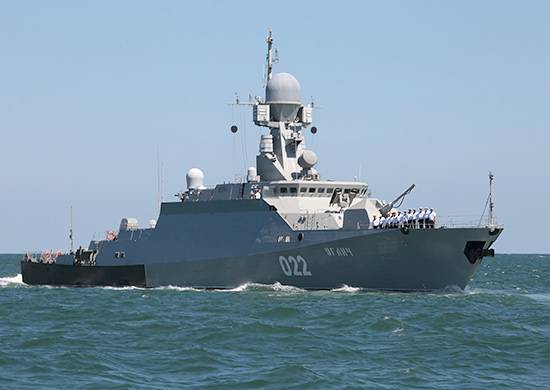
Funny, but the hybrid turned out quite functional. He could solve the problems that the small artillery ship was solving. It could pass from the Caspian to the Black Sea and back (but not to the Baltic - the height does not allow passing under the Alexander Bridge). And he allowed Russia to bypass the restrictions, under which she signed in the INF.
It cannot be said that such a decision was rational. Imported GEM made the ship disproportionately expensive in comparison with its combat potential. The absence of significant air defense systems and the complete absence of the ability to defend against submarines or torpedoes made the ship almost inapplicable in a “big” war, except for the tasks of launching the CD from a safe distance. In fact, for the cost of two such ships could get a much more powerful ship, capable of and fight with submarines, and carry cruise missiles, and interact with the helicopter, if someone had done it. Or you could get an 20380 corvette, which also has incomparable combat potential, with the exception of strikes on the shore, where the superiority was over 21361. And, the ship was not seaworthy. The inter-base transition from the Black Sea to the Baltic was a very difficult test for ships - despite the fact that there was no more than four points during the transition.
Then the “reactive effect” came on - our RTO is non-seaworthy (and who ordered the nautical)? Does he have imported GEM? Weak air defense? Is he expensive? We are doing a new project, nautical, with a domestic GEM, with enhanced air defense and cheaper.
Thus was born the project 22800 "Karakurt". The ship, which is much closer to the "classic" IRA, rather than 21361. I must say that it was exactly how the “Karakurt” MRC succeeded. He is really fast and seaworthy, and, like his predecessors, he has powerful offensive rocket weapons. Once the ships start to put the PRAZYR MISS, he will also be able, at the very least, to repel air attacks and rocket attacks, even if inflicted by small forces.
Like 21361, Karakurt can perform the tasks of striking long-range cruise missiles at the coast. Everything seems to be great, but again the question is in the concept - the three of “Karakurts” will easily sink “Tikonderogu”, but who will put “Ticonderog” under their blow? The answer is no one. And what if they push into the enemy's submarine? The speed will not save them, torpedoes are faster, measures to evade torpedoes lacking hydroacoustic vehicles cannot be taken. Namely, enemy submarines will be the first in our near-sea zone. To beat off a massive strike of large aviation forces, the ISC group will not be able to. Namely, aviation will be the next threat after submarines.
So it turns out that anti-submarine ships, and ships capable of protecting them from air strikes, should be attached to the interregional communications centers, otherwise the interregional stations themselves will become the victims of the enemy. And this is already what is called a completely different money.
And all this imposes problems with obtaining engines, which, it seems, will not be solved in the manner envisaged by the project. One should expect gas turbine afterburner to appear in Karakurtakh.
Finally, the last nail in the coffin of the concept of the IRA- "Kalibronostsa." The US exit from the INF Treaty allows Russia to simply deploy long-range cruise missiles in a car chassis. Given the small size of a cruise missile, it does not necessarily have to be an expensive MZKT chassis, standard for the Iskander OTRK. This may be a banal KAMAZ. In such conditions, the construction of IRAs of existing projects finally loses all meaning.
We summarize the
RTOs are a product of a different era in which the sea war was waged by methods other than now. Despite the fact that such ships can be successfully used even now (for example, as part of a shipboard strike group, conducting fast attacks with a way out of the air defense and PLO warrants and returning back), both for naval combat and for strikes using cruise missiles, the need to be armed with such a class of ships is no more. Any demanded function that the IRA can with great benefit to perform now, can be assigned to other, more versatile ships.
Any function that only MRKs are capable of performing is not particularly in demand at the moment, mainly due to the fact that the enemy will not conduct offensive hostilities by surface ships. It will use submarines and aircraft as the main striking force, and carefully guard valuable URO ships from any attack, mainly by deploying them in relatively safe areas of the world’s ocean, in the far sea and oceanic zones, just to prevent us from attacking them means. Including MRK. The range of sea-based cruise missiles carried by URO ships allows them to be used in this way.
There is an argument “for IRAs” in the form of a reference to the battle of the IRA “Mirage” during the war with Georgia in August 2008. But let's understand that the suicidal attack of the Georgian boatmen would also have been repulsed by the 20380 corvette, the 11356 frigate, and indeed almost any surface ship with a well-trained crew, except perhaps the standard 22160 patrol ships (without a modular missile weapon) . Well, it turned out that there were RTOs as “light forces”. And also let us understand that the very fact that Georgian boats sailed into the sea became possible only due to the complete fiasco of domestic military aviation in that war, including the sea one, which should have been involved in ensuring the passage of ships to the coast of Abkhazia. In the correct version, they simply should not have been allowed to approach our ships at a distance of rocket volley.
We are waiting for an era when incompatible things will be demanded of the fleet - to increase combat power without a proportional increase in expenses. This requires not scattering scarce financial resources on highly specialized ships, built essentially for one task - the attack of surface ships, which is unlikely to be in a war with a serious opponent. And cruise missiles and other carriers can be launched - from frigates to cars.
In addition, we expect a demographic failure, which will inevitably affect the recruitment of the Navy, as the percentage of people in society who have personal data that allow them to become commanders of ships is finite. Fewer people - fewer potential commanders, this is soon waiting for us, and this is another reason not to dissipate.
What kind of ships do we need in the near sea zone? This is a very complex issue that requires separate analysis. For now, we will limit ourselves to the fact that it must be ships with excellent anti-submarine capabilities, with at least a satisfactory air defense, with a gun capable of using guided projectiles against air targets, and supporting the landing of troops with fire. Ships capable in one way or another to interact with anti-submarine helicopters (to have a runway and fuel reserves, TSA and RGAB for them, perhaps, plus all this hangar, it does not matter, full, as on 20380 or movable). The tasks that we will face in BMZ will require just such ships, and not MRK. This does not mean that these future ships should not have anti-ship missiles, they are just priorities.
What to do with already constructed RTOs? Naturally, to leave them in the ranks, moreover, they need to be modernized. If you recall by what rules did the Americans build up their naval power under Reaganit is clear that there can be no talk of writing off new and at least relatively efficient ships. You need a lot of warships, at least some. Any warship increases the tension of the enemy's Navy, causes it to waste effort, time and money. Yes, IRAs are conceptually outdated, yes, we no longer need to build ships of this class, but those that are, it is still quite possible to use it properly.
First, you need to upgrade your weapons on the old men of the 1234 project, and on the Sivuchi too. It is necessary to replace the available launchers with oblique launchers from which you can launch Caliber missiles. First, if it still reaches the use of such ships against enemy surface ships, then the Gauges are among their most useful options. Secondly, in the correct version, it is necessary to ensure that all SLCM SLCMs are used for strikes against ground targets. Of course, it is also possible with a car, but the ship has a mobility factor, it allows you to push the launch line very far from the borders of Russia. In the “big” war, this will not play a big role, but in a local conflict somewhere in North Africa the solution will be quite “to the point”. There, in the absence of not only aircraft carriers in the Russian Federation, but also DMZ warships in significant quantities, even the anti-ship capabilities of the IRAs will be in demand. As the fact of the presence of at least some ships.
Is it possible to install such inclined guides on such ships? Installing 12 TPK for a larger than “Caliber”, anti-ship rocket “Onyx” on the Nakat MRC project 1234.7 says yes, quite, and in large quantities. There are also projects of such modernization.
The second direction of modernization should be the equipping of all existing IRAs with anti-torpedo protection based on the M-15 anti-torpedoes, now part of the package “NK-NK”. It is necessary that each MRK be equipped with a small-sized GAS capable of detecting torpedoes going to the ship, and having the opportunity to launch an anti-torpedo through a torpedo, at least from rechargeable TAs, at least from TPK, at least somehow. And the more anti-torpedo ammunition will be the first stage, the better. Naturally, the ships must be equipped with hydroacoustic countermeasures. They will not be able to hunt submarines because of this, but this is not required.
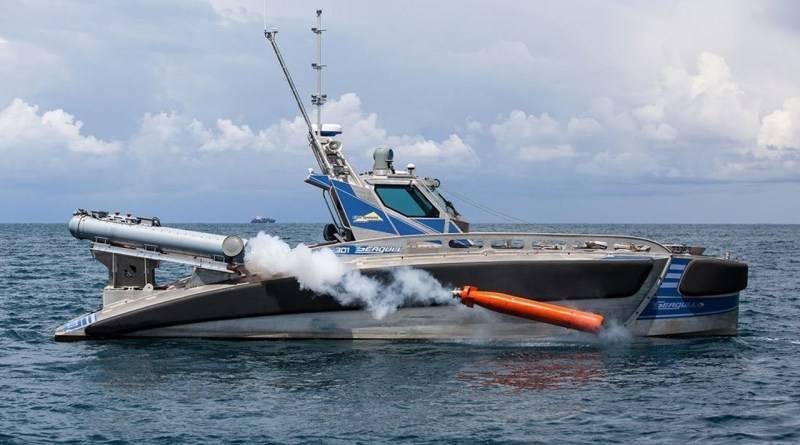
Air defense and electronic warfare systems need to be upgraded, and guided projectiles for firing at air targets should be introduced into the ammunition load.
The option currently proposed for upgrading the interregional stations associated with the installation of a large number of missiles of the Uranus complex on them is not entirely successful. On the one hand, the rocket offered for installation as part of this modernization is very good and costs less than other options. On the other hand, such a modernization limits the functionality of the IRAs to strikes against surface targets and, when a naval version of a missile intended for striking ground targets is entered into service, targets near the coastline. Such modernization makes sense only in the Baltic, where fights between “mosquito fleets” are very likely, as are fights between surface ships and ground-based missile systems. For the rest, the Calibra theater is preferable.
Upgraded MRKs will have to “pull” until the new types of ships are re-equipped with new types of ships, so as not to reduce the strength of the crew. But building new ones is no longer necessary.
The last question is the ships under construction. All of them also need to be upgraded. Those ships that have already been laid, and whose hulls are formed at least by 20%, must be completed. Let even with GEM on the basis of GTD M-70. But those contracts for which no new ships have been laid yet, or where we are talking about just the welded mortgage section, need to be canceled. It is more profitable for the Navy and Defense Ministry to pay a penalty than to spray resources on ships designed for the past era.
Slowly (taking into account the need to maintain the maximum number of warships in the Navy), but surely this class of ships must go to history.
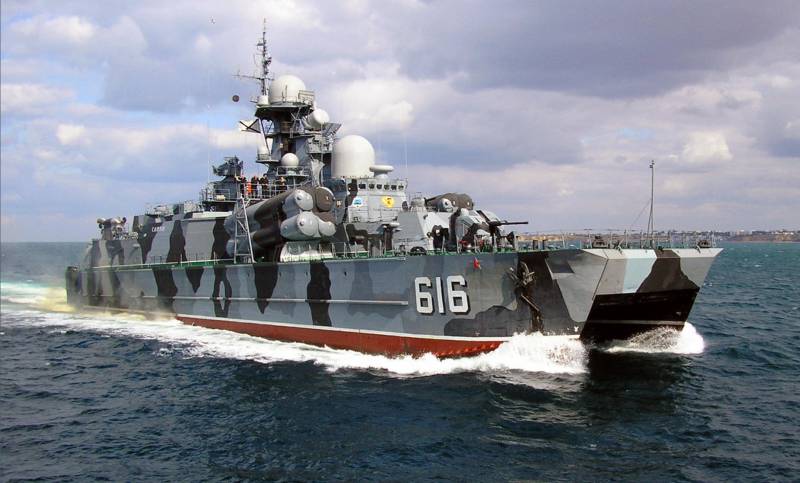
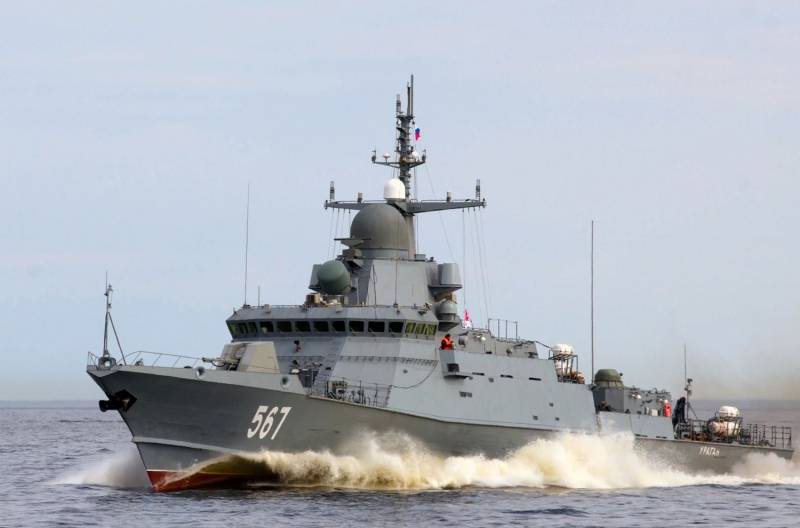
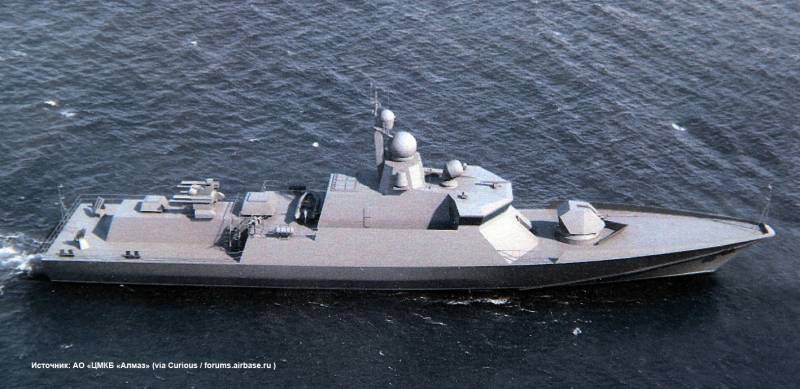
Information